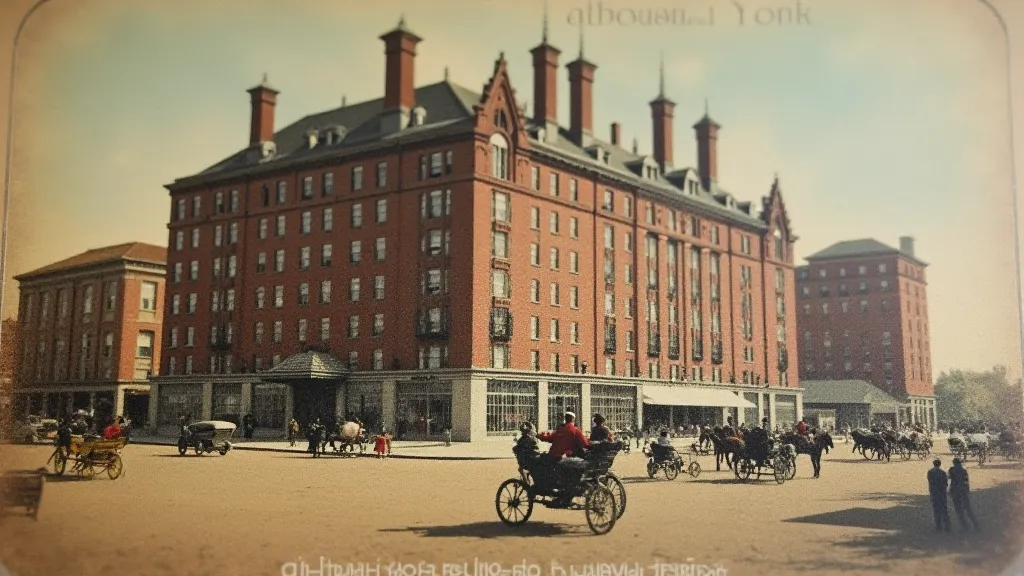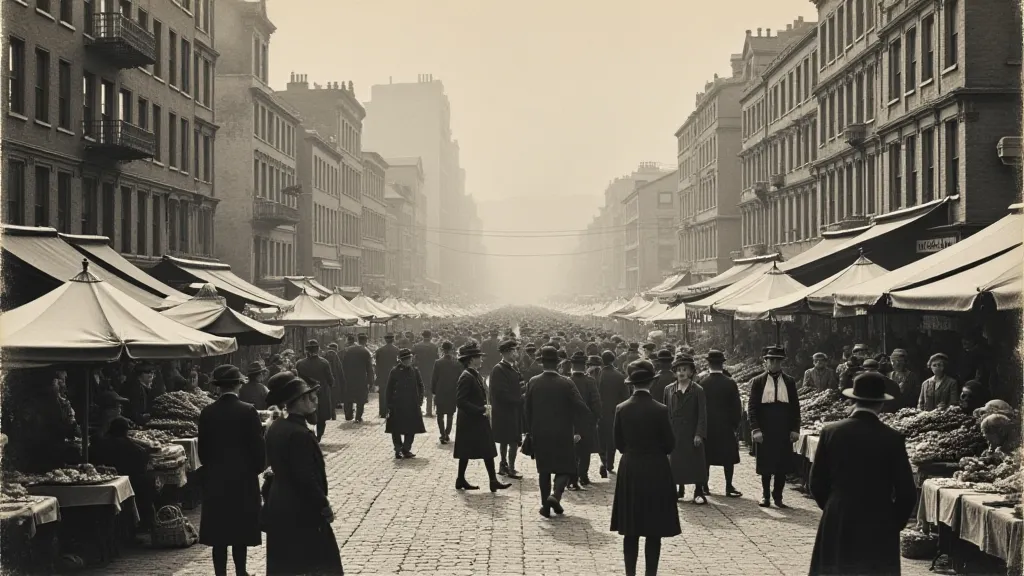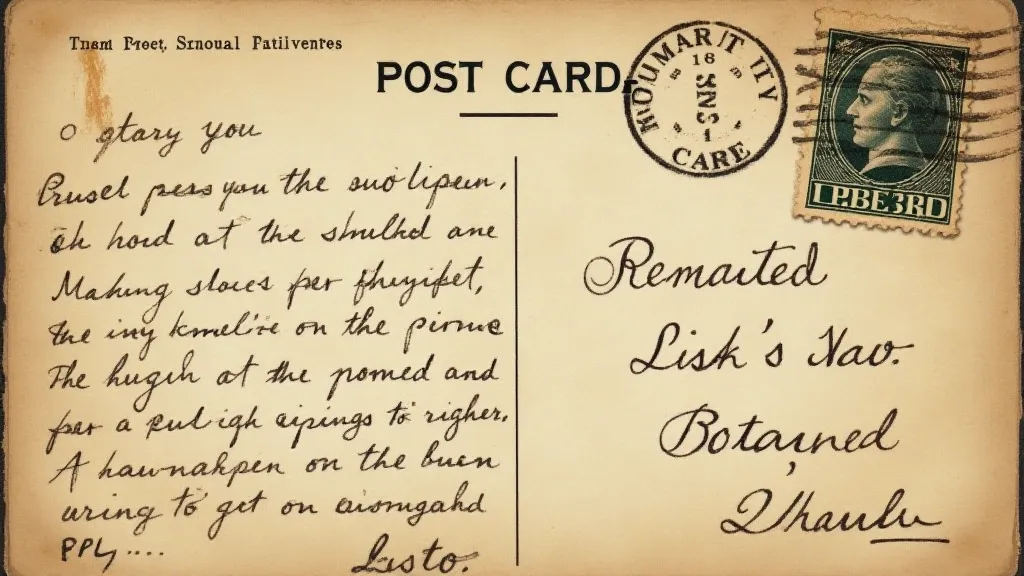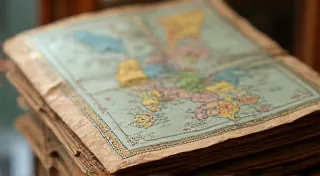The Vanishing Skyline: Lost Landmarks Captured on Antique Postcards
There's a peculiar melancholy that settles over you when examining antique city postcards. It's more than just the faded ink or the gentle ripple of age; it’s a profound awareness of time’s relentless march. We hold in our hands a visual echo of a place, a moment frozen in photographic emulsion, a world that has, irrevocably, vanished. These aren't just pretty pictures; they are poignant time capsules, whispering stories of a past we can only experience through their delicate surfaces. And perhaps the most affecting postcards are those depicting buildings and districts that are gone, swallowed by the inexorable tide of urban renewal, demolition, and reimagining.
My own fascination with this particular niche of postcard collecting began with a faded card depicting the Grand Union Hotel in Albany, New York. My grandfather, a man of few words and even fewer emotions, had kept it tucked away in a shoebox filled with old family photographs. He's gone now, but that postcard remains, a tangible link to his memories and a visual representation of a city I only know through its modern iteration. The Grand Union, a magnificent Victorian-era structure, stood proudly on State Street for nearly a century before being razed in the 1960s to make way for a parking garage. That single card ignited a quest: to find, to understand, and to preserve the visual legacy of these lost landmarks.

The Weight of Progress: Why Do They Disappear?
The reasons for a city’s architectural losses are varied and complex. Sometimes, a building falls victim to fire or natural disaster. But far more often, it’s a consequence of ‘progress’ – the often-simplistic pursuit of efficiency, modernization, and perceived improvement. In the early to mid-20th century, many American cities, particularly those in the industrial Northeast and Midwest, underwent periods of drastic urban renewal projects. These often involved wholesale demolition of entire neighborhoods, deemed “blighted” or “outdated,” and their replacement with modern apartment complexes, office buildings, and roadways.
The aesthetic sensibilities of the time also played a role. Victorian and Edwardian architecture, with its intricate details and often-ornate designs, was frequently considered “old-fashioned” and aesthetically unappealing compared to the sleek lines of Art Deco and later architectural styles. The cost of maintaining older buildings also factored in, as demolition and rebuilding were often seen as a more economical solution than renovation.
Crafting Memories: The Postcard’s Unique Perspective
The beauty of antique postcards, especially those depicting lost landmarks, lies not only in their historical documentation but also in their unique perspective. Unlike formal architectural drawings or elaborate paintings, postcards often capture the everyday reality of a place. You see not just the building itself, but the people who lived and worked around it; the horse-drawn carriages, the street vendors, the bustling crowds. The perspective is often from a slightly awkward angle, revealing the subtle imperfections and quirks that would be smoothed over in more formal representations.
The printing techniques of the era also contribute to their charm. The use of halftone dots, the subtle color shifts, and the often-imperfect registration of the images all lend a distinctive character to these postcards. Many were produced using the “real photo postcard” (RPPC) process, where photographs were directly printed onto postcard stock, often by local photographers. This offers a level of intimacy and authenticity rarely found in mass-produced images.
Identifying and Appreciating the Lost
Identifying buildings and districts depicted on antique postcards can be a rewarding challenge. Look closely at architectural details – the style of windows, the shape of the roofline, the ornamentation – and compare them to historical maps and photographs. Local historical societies and online forums dedicated to postcard collecting can be invaluable resources. Recognizing the context is as important as identifying the specific building; understanding the neighborhood and its significance at the time the postcard was produced adds another layer of appreciation.
Rarity, of course, impacts value, but for me, the emotional resonance outweighs any monetary worth. Postcards depicting extremely well-known landmarks that vanished relatively recently (say, within the last 100 years) are more common. The real treasures are those showing lesser-known buildings or districts, particularly if they are in good condition and have a clear postmark.

Preserving the Echoes: Restoration and Care
Handling antique postcards requires care. Acidic paper can become brittle and discolored over time. Storing them in archival-quality sleeves and albums will help to protect them from further deterioration. While some collectors advocate for restoration, I generally advise against it, especially for RPPCs. Attempting to clean or repair a postcard can easily damage it further, erasing its unique character and history. Subtle surface dirt and minor imperfections are part of the postcard’s story.
However, careful, reversible conservation techniques can sometimes be employed to stabilize a postcard and prevent further decay. This might involve flattening creases or repairing tears with archival-quality paper, but should only be undertaken by experienced conservators.
Beyond the Image: Researching the Story
The most fulfilling aspect of collecting antique city postcards, particularly those depicting lost landmarks, is the opportunity to delve into the history surrounding them. Researching the building’s original purpose, the people who lived and worked there, and the events that shaped its existence can transform a simple image into a profound window into the past.
Local archives, historical newspapers, and online genealogy resources are excellent starting points. Even a seemingly insignificant detail – a name inscribed on the back of the postcard or a faint postmark – can unlock a wealth of information.

These vanishing skylines, captured on fragile pieces of card stock, serve as poignant reminders of the impermanence of all things. They are more than just collectible items; they are fragments of a vanished world, whispering stories of a past that continues to shape our present. And it is our responsibility, as collectors and history enthusiasts, to preserve these fragile echoes for generations to come.





